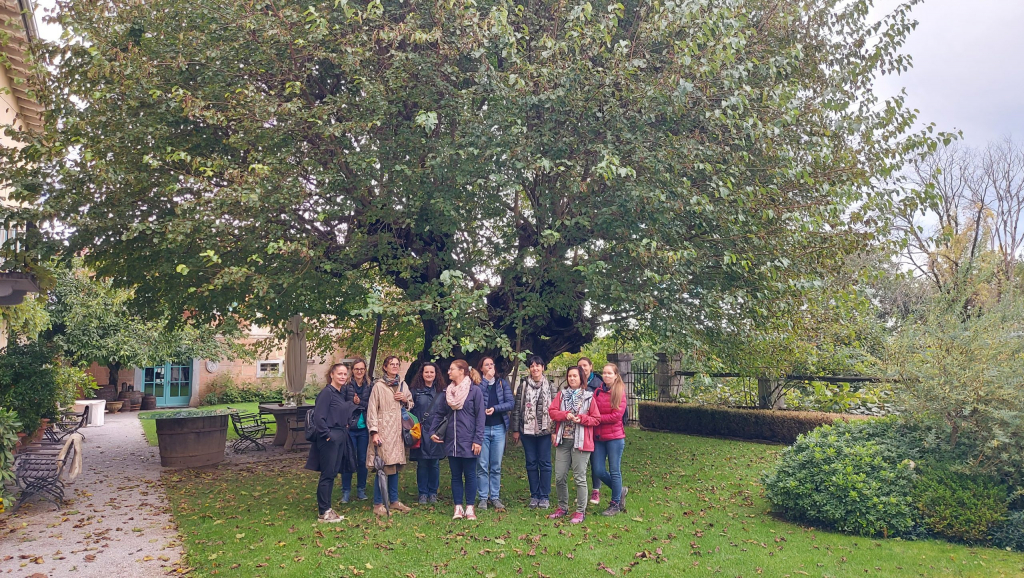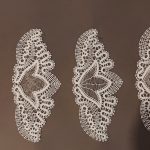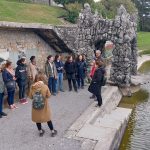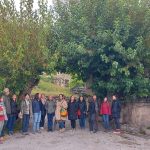ON THE TRAIL OF MULBERRY TREES
On Friday, 4th October 2024, members of the Slovenian Society of Plant Biology embarked on an expert excursion to the Karst, to follow the trail of mulberry trees in order to learn more about the ethnobotanical background of the once important silkworm industry in Slovenia.
First, we visited the mighty Fabiani mulberry tree in the village of Kobdilj near Štanjel, which has been carrying the story of the Fabiani family for centuries in the heart of the Karst. The charisma of the estate is marked by the architectural designs of Max Fabiani, the centuries-old mulberry tree, the estate park with its rose grove, the restored orangery and the vineyard with the indigenous piccolite variety. We tasted wine from this very special variety, while being told by Mrs Blanka Malgaj, owner of the Vila Fabiani estate, about the mulberry tree, the expertise of the architect and town planner Max Fabiani and the history of the estate. From Kobdilje, we walked to nearby Štanjel, where we walked through the Ferrari Garden, designed by Maks Fabiani, which is reknown in landscape architecture thanks to its unique water supply system.
We continued along the Silk Road to the picturesque village of Kobjeglava, where the mulberry trees in the village still are a testimony to the fact that families used to be silk farmers. We ended our visit at the Ščuka ham factory under a mighty mulberry tree, where the Ščuka family, while tasting the ham, showed us the technological process and their family tradition of aging the ham. The Ščuka prosciutto factory is the oldest still-operating. In the maturing house operating since 1966, the traditional technique of drying and ripening ham on wooden racks by opening and closing the windows every day is preserved to date.
The evening was spent listening to the story of the unraveling silk thread, presented in an article in the National Geographic Magazine and the presentation of the catalogue Silk unveiled, which was produced under the auspices of the ARACNE project. The participants had the opportunity to admire bobbin lace made of silk produced and unwound by Slovenian silk rearers. The magnificent lace was made by members of the Ljubljana Laceweaving Society under the mentorship of Simona Strgulc Krajšek. The exhibition also included publications, bobbin lace by Majda Štampar from Ormož and hand-spun threads and a piece of fabric woven from raw silk thread harvested, dried, unspun and woven on a weaving frame under the skilful hands of Maja Botolin Vaupotič from Velika Nedelje. The exhibition was enriched by the presentation of textile materials, including printed patterns on the theme of silk production by students of the Faculty of Mechanical Engineering of the University of Maribor and students of the Maribor Secondary School of Design under the ARACNE project.
The highlight of the day was a workshop on silk thread unwinding, led by Dragana Trivundža Tomanić, a silkworm rearer from Sele pri Črniče. We experienced tangible contact with the history of silk craft during the workshop. For us, it was an opportunity to get in touch with the history and technique of silk processing by trying our hands at silk threading, which added to the excursion.








